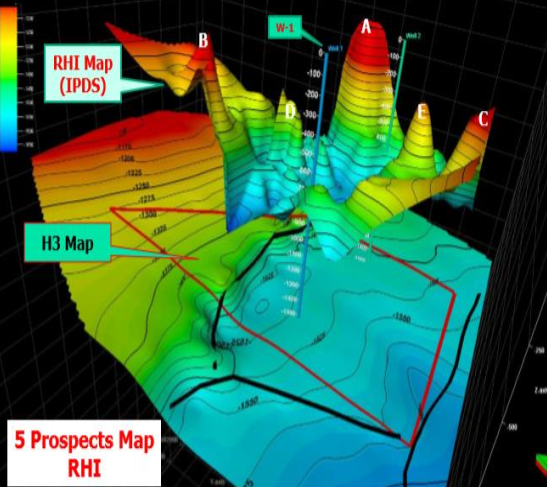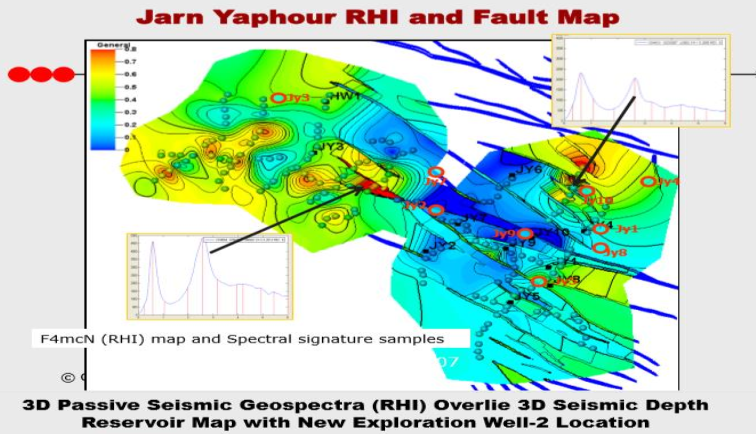 The Passive Seismic Spectroscopy (PSS) survey method is a unique technology for Hydrocarbon Reservoir
Indication (RHI) and monitoring. Application of this technology was utilized in several countries worldwide
since 1996. Over hundred and thirty surveys have been run so far during the last twenty-five years.
The Passive Seismic Spectroscopy (PSS) is based on the principles of non-linear behaviour of multiphase
fluid systems in the reservoirs. Hydrocarbons in the pore system are detected at surface as a characteristic
deformation caused by ambient vibration of the normal signature of the natural earth’s noise signal in the
low frequency
range between 1 Hz and 8 Hz, depending mainly on different fluids compressibility of gas/solution gas/oil
and water in porous and fractures reservoir media. This very low frequency signals, assonates with the very
tiny earth surface movement (Surface tremors), it is then measured by a very highly sensitive hydrocarbon
broadband sensor (Very Low Frequency Seismometer) from the ground surface. Development and application of
passive low frequency acoustic and electromagnetic technologies are used detecting the hydrocarbons and oil
reservoir monitoring – from the surface. The technology outcome was high success in drilling HC wells and
gained momentum and potential in monitoring of developed oil and gas fields.
The Passive Seismic Spectroscopy (PSS) survey method is a unique technology for Hydrocarbon Reservoir
Indication (RHI) and monitoring. Application of this technology was utilized in several countries worldwide
since 1996. Over hundred and thirty surveys have been run so far during the last twenty-five years.
The Passive Seismic Spectroscopy (PSS) is based on the principles of non-linear behaviour of multiphase
fluid systems in the reservoirs. Hydrocarbons in the pore system are detected at surface as a characteristic
deformation caused by ambient vibration of the normal signature of the natural earth’s noise signal in the
low frequency
range between 1 Hz and 8 Hz, depending mainly on different fluids compressibility of gas/solution gas/oil
and water in porous and fractures reservoir media. This very low frequency signals, assonates with the very
tiny earth surface movement (Surface tremors), it is then measured by a very highly sensitive hydrocarbon
broadband sensor (Very Low Frequency Seismometer) from the ground surface. Development and application of
passive low frequency acoustic and electromagnetic technologies are used detecting the hydrocarbons and oil
reservoir monitoring – from the surface. The technology outcome was high success in drilling HC wells and
gained momentum and potential in monitoring of developed oil and gas fields.

